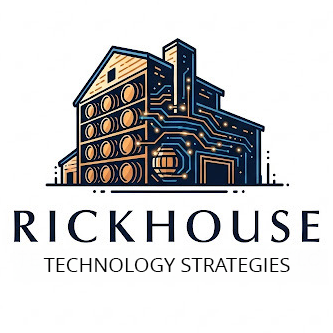
This past weekend, a casual conversation at a social gathering underscored a fundamental truth about the current state of technology. A friend, whose children are currently studying software engineering at major (and expensive) universities, asked for my honest opinion as a seasoned technologist on the future relevance of their degree in an AI-driven world. Little did she know, I had just spent my day and much of the weekend “vibe coding” applications for my new business, and the results were nothing short of mind-blowing, serving as a powerful demonstration of the AI-driven future.
For those unfamiliar, “vibe coding” is my new favorite term for using natural language prompts to guide an AI, specifically a large language model, to generate functional code. And the “vibes” I got this weekend were incredibly powerful.
From SaaS Veteran to “Vibe Coder” in Hours (Not Months)
As someone who has spent the last decade working with industry leaders like Salesforce and ServiceNow, I’m intimately familiar with the complexities, costs, and timelines associated with enterprise software programs and the traditional benefits of SaaS platforms over customer development. (That was my sales message for years.) Imagine my astonishment when, in just a couple of hours, using 100% AI-generated code, I built a lightweight CRM for my new company. This wasn’t just a basic shell; I included functionality to track accounts, contacts, and opportunities, and even integrated it with a task application to automatically create due date reminders. The best part? The entire application operates completely free of charge.
This experience wasn’t just about building a tool; it was about fundamentally challenging traditional methods of custom software development, its accessibility, and its associated costs. The ability to rapidly prototype and deploy sophisticated applications with zero code written by me is a game-changer.
Beyond Code: AI’s Impact on Content and Creativity
Perhaps even more impressive was the business website I brought to life this weekend. (Check it out https://www.rickhousetechnology.com/) The AI drafted modern, visually appealing code based on my inputs, and to circumvent the need for costly stock photos, it even generated AI images that perfectly fit my brand.
But the AI’s impact extended far beyond the technical architecture. My project the weekend prior was drafting all the content for my website and LinkedIn pages. This isn’t just about developers; it profoundly impacts the role of marketers and copywriters. While it took a few iterations of prompts to refine the copy, the final results were truly impressive, challenging traditional notions of content creation.
Agility, Flexibility, and a New Paradigm for Software
The final application I built this weekend was an expense tracking system for my new venture. Similar to Concur, I can easily categorize expenses and attach receipts. What’s truly fascinating is the ease with which I can still come up with additional enhancements for both the expense tracker and the CRM – and it only takes a few minutes to make and deploy these changes. For my next enhancement, I’ll be adding functionality to scan a receipt and automatically complete the expense details with AI.
What Does This Mean for Business, IT, and SaaS?
This weekend’s immersion into “vibe coding” has solidified my belief in AI’s incredible power to reshape how we think about:
- Business Agility: The ability to rapidly develop custom solutions means businesses can respond to market demands and internal needs with unprecedented speed.
- IT Project Delivery: We’re moving towards a world where complex IT projects can be initiated and prototyped at a fraction of the traditional time and cost, shifting the focus from manual coding to intelligent prompt engineering and solution architecture.
- Software Procurement, Especially SaaS: For many use cases, the traditional choice of expensive SaaS platforms may give way to more flexible, lower-cost, custom-built software solutions. This isn’t to say SaaS is dead, but its value proposition for certain niches and highly specific requirements will be challenged by the speed and affordability of AI-generated custom applications.
- The Future Workforce: My friend’s question about software engineering degrees is more relevant than ever. While foundational knowledge remains crucial, the future of development will increasingly involve the developer’s propensity to guide AI, understanding its outputs, and leveraging its capabilities for innovation. Creativity, problem-solving, and prompt engineering will be paramount.
The AI revolution is not just on the horizon; it’s here. It’s empowering individuals and businesses to build, create, and innovate in ways we could only dream of a few years ago. I’m excited to continue exploring these possibilities and look forward to discussing how these shifts will impact our collective future.
What are your thoughts on “vibe coding” and the democratizing power of AI in software development?
Share your insights below!

Noel Hara is a visionary business and technology leader with 20+ years of experience driving innovation and growth at the intersection of technology and commerce.

Leave a Reply